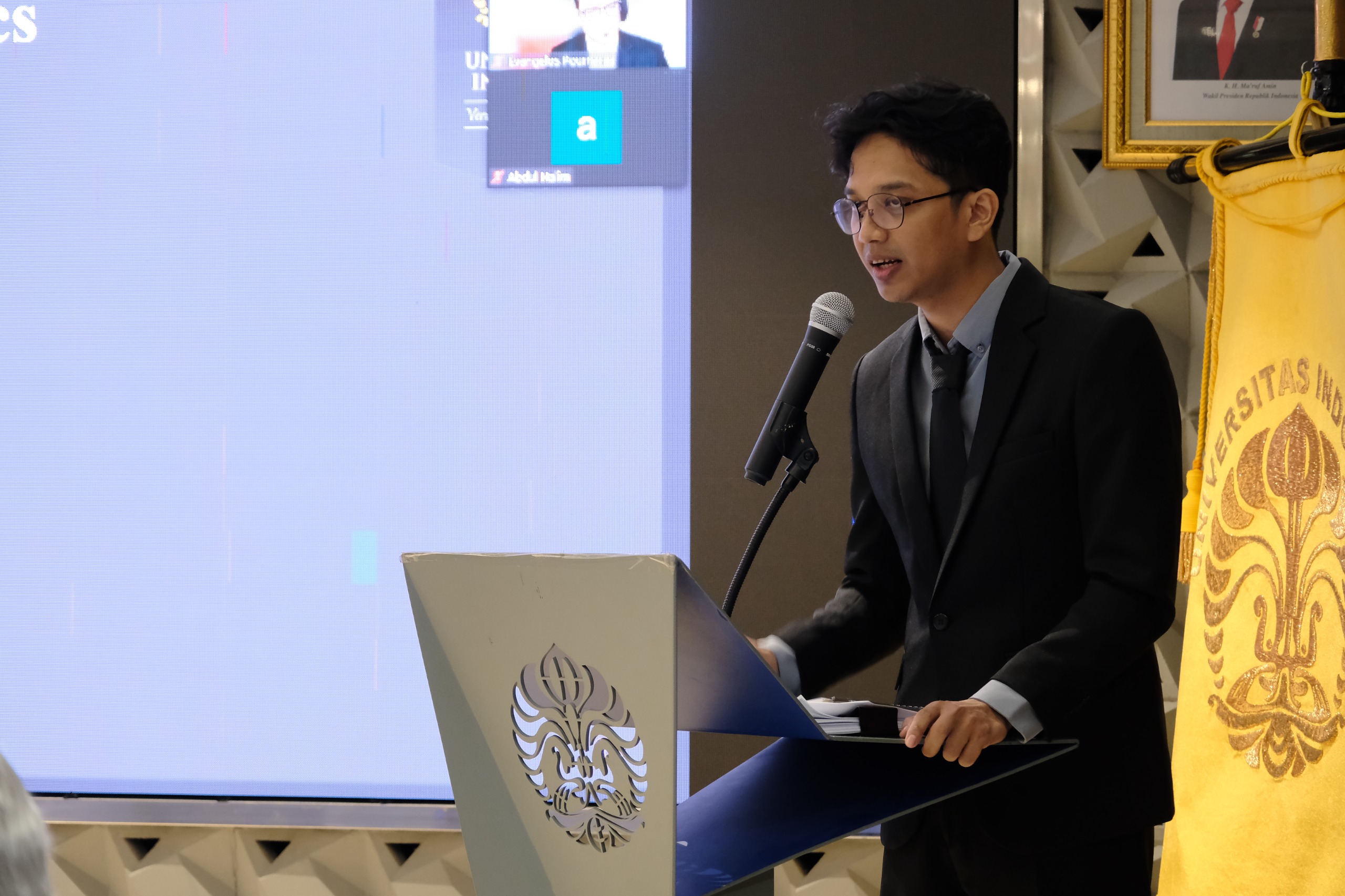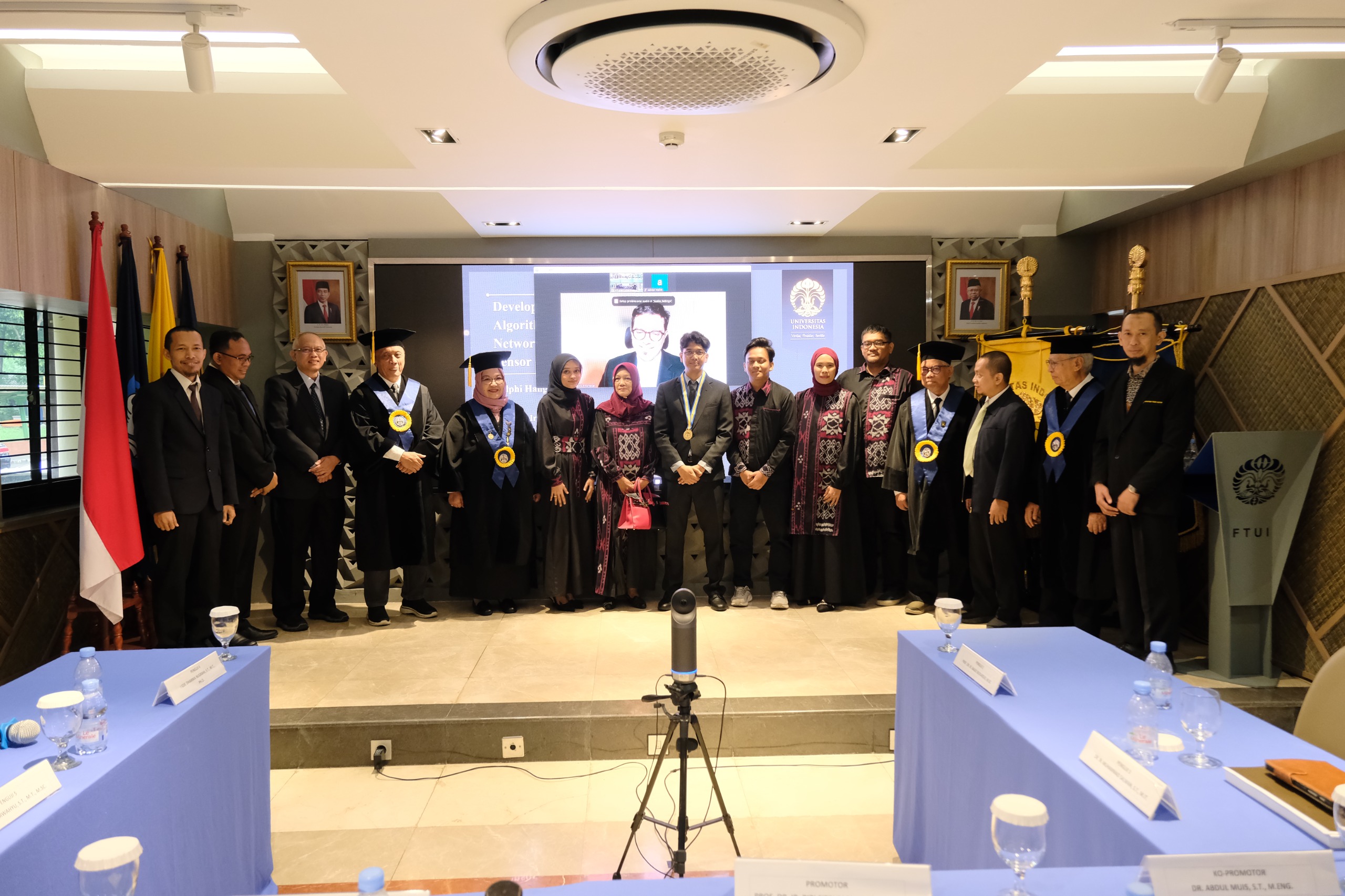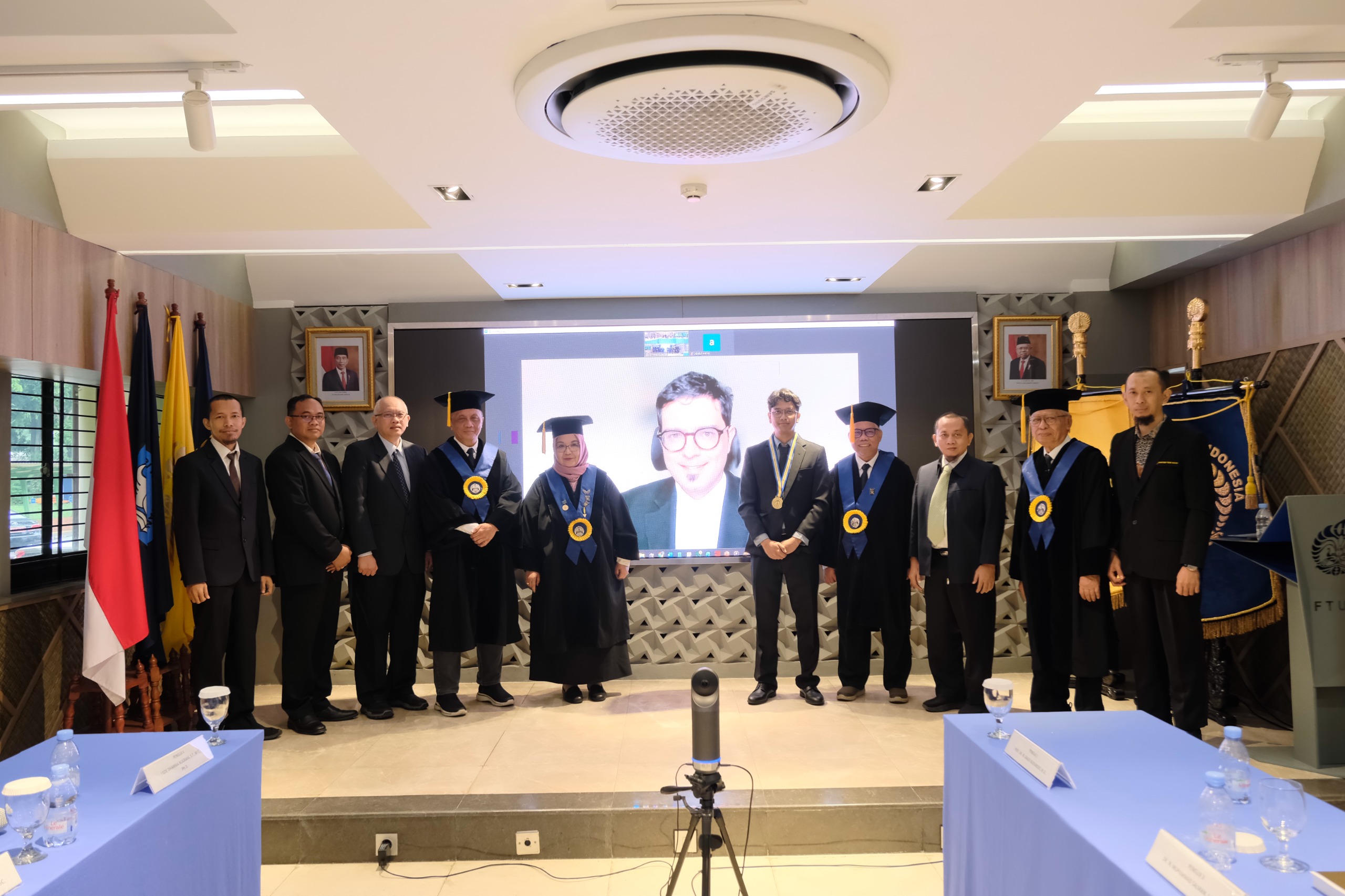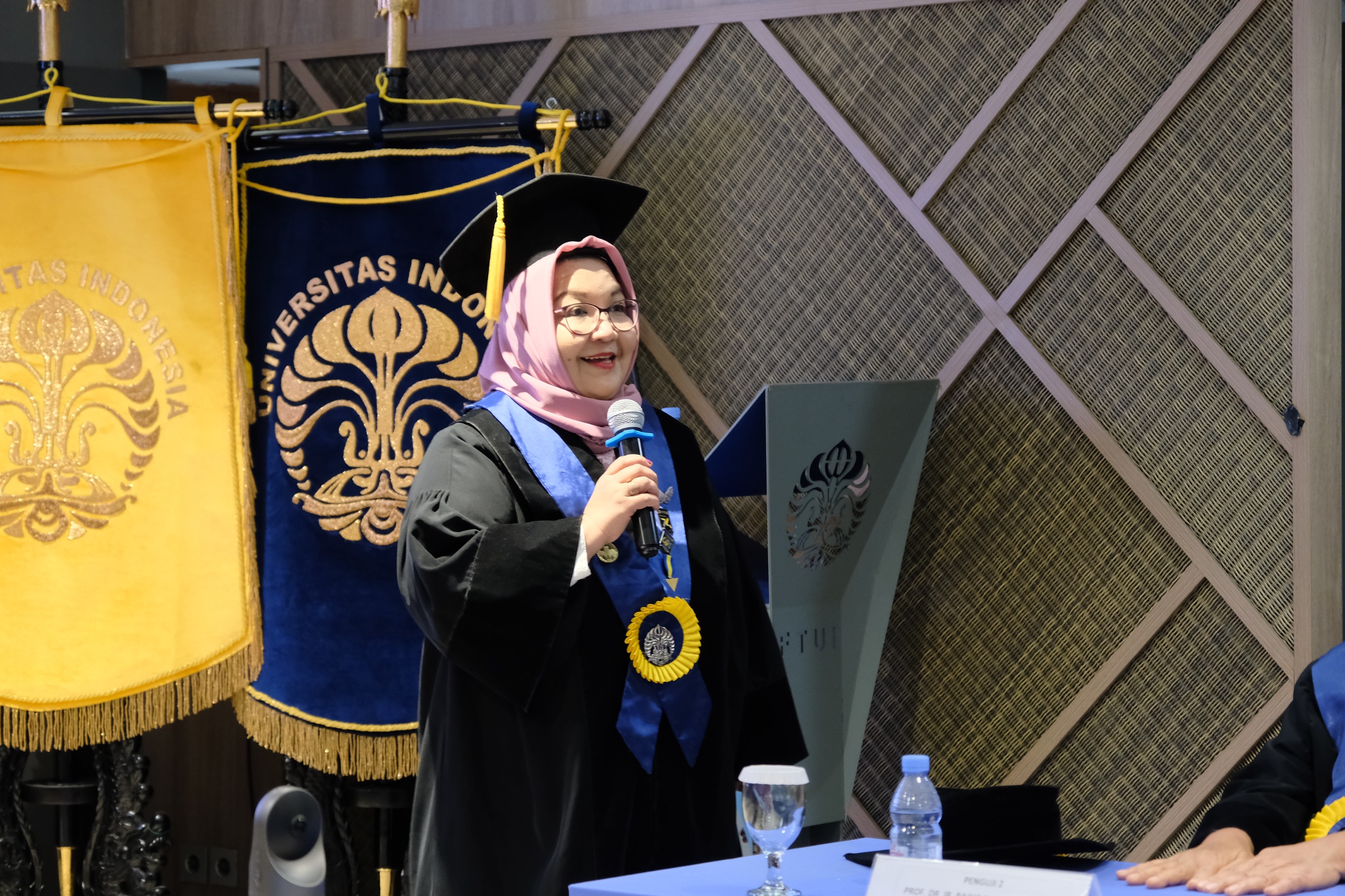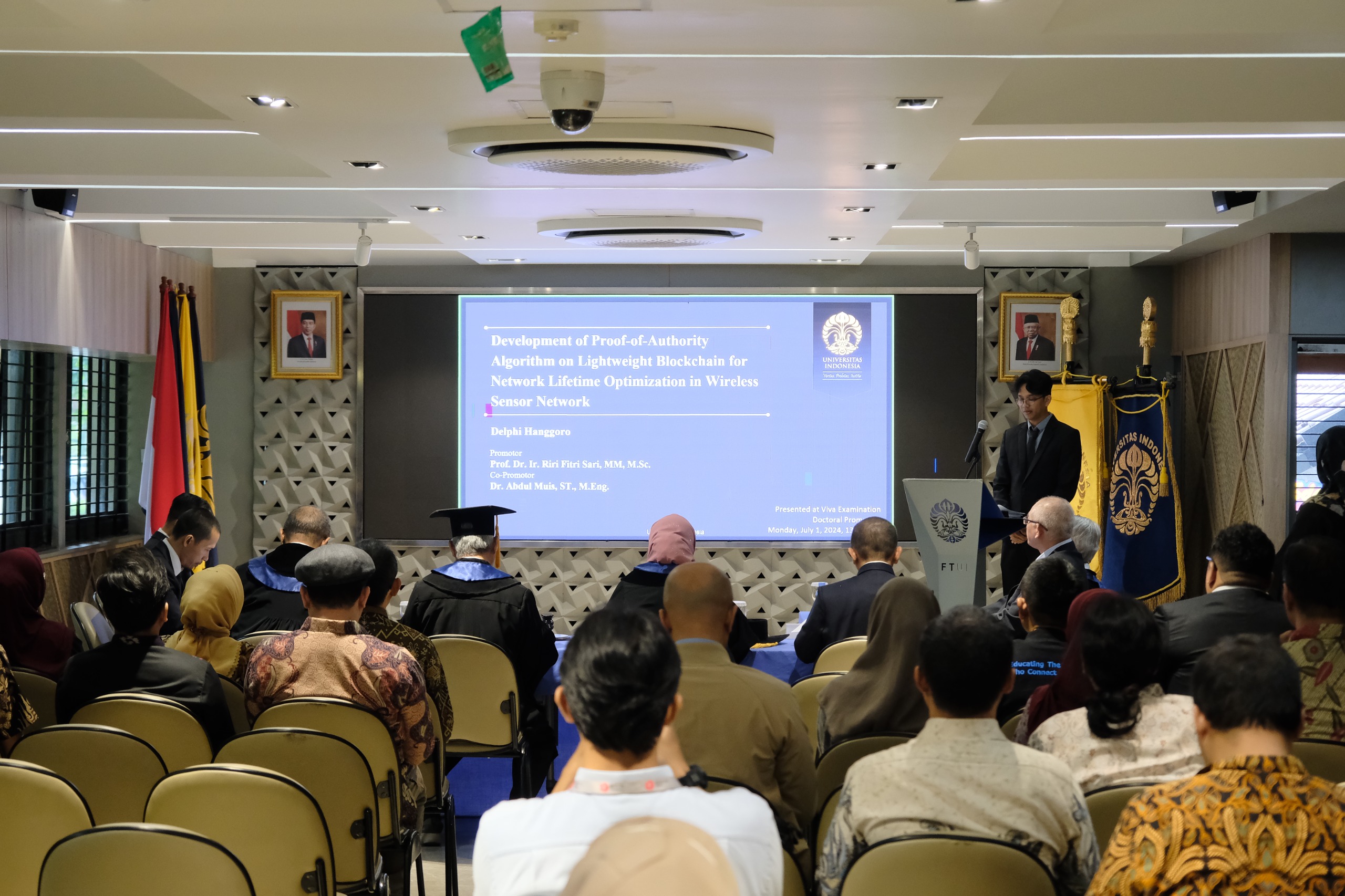The integration of lightweight blockchain in Wireless Sensor Networks (WSN) has become a solution for various challenges in authentication, authorization, security, and data integrity. However, previous research has always focused on features without considering network lifetime. Consequently, Delphi Hanggoro, a doctoral student in the Electrical Engineering Department at FTUI, conducted research focused on improving network lifetime by modifying the Proof-of-Authority (PoA) algorithm. This innovation is detailed in his dissertation titled “Development of Proof-of-Authority Algorithm on Lightweight Blockchain for Optimizing Network Lifetime in Wireless Sensor Networks.”
Delphi’s modifications aim to create a new method that can enhance network lifetime and block production in WSNs integrated with lightweight blockchains. “Specifically, this research identifies the optimal lightweight blockchain consensus algorithm, modifies message exchange to a star topology, develops a fair block proposer rotation, and builds a hierarchical blockchain model. The network used in this research is a clustered WSN, consisting of a Base Station, Cluster Head, and Sensor Nodes,” explained Delphi.
In this research, Delphi introduced Energy-aware Proof-of-Authority (EA-PoA) as a proposed modification of the message exchange scheme from PoA’s mesh topology to a star topology and changed the block proposer (Leader) selection mechanism from round-robin to battery-level-based. As a result, the development of block proposer rotation from PoA to EA-PoA, which uses the Clique mechanism, has been proven to balance energy usage in the network and extend network lifetime by up to 10% compared to traditional PoA.
“The PoA consensus algorithms used in this research, AuRa and Clique, have their advantages and disadvantages in WSN integration. Aura is compatible with message exchange mechanisms in WSN but has scalability issues. Meanwhile, Clique has a shorter message exchange time than AuRa but has a protocol that potentially discards data,” said Delphi.
Additionally, Delphi developed a hierarchical blockchain network model called the Multi-Level Blockchain Model (MLBM). MLBM consists of a local blockchain and a master blockchain. The local blockchain manages sensor nodes within each cluster, while the master blockchain manages headers from several blocks in the local blockchain. This model has been proven to increase block production up to twice with each cluster addition. MLBM can be adjusted according to needs in terms of stack configuration, making this model suitable for both large and small-scale networks, depending on block production and propagation requirements.
Dean of FTUI, Prof. Dr. Ir. Heri Hermansyah, ST., M.Eng., IPU, commented on this research, “In this digital era, data security and efficiency are crucial. Delphi’s research on the integration of lightweight blockchain in WSN is a relevant and needed innovation. Furthermore, this research can open new opportunities for various practical applications in blockchain technology and more efficient wireless sensor networks.”
Thanks to his research, Delphi Hanggoro was conferred a doctoral degree with a GPA of 3.93 and cum laude honours on Monday, July 1, 2024. Delphi is the 172nd doctorate graduate from the Electrical Engineering Department and the 553rd from FTUI. He is also a recipient of the Magister Education to Doctorate for Superior Graduates (PMDSU) scholarship.
The Doctoral Promotion session was led by Chairperson Prof. Ir. Mahmud Sudibandriyo, M.Sc., Ph.D.; with Promoter Prof. Dr. Ir. Riri Fitri Sari, M.M., M.Sc.; and Co-Promoter Dr. Abdul Muis, S.T., M.Eng. The examining committee consisted of Prof. Dr.-Ing. Ir. Kalamullah Ramli, M.Eng.; Prof. Dr. Ir. Bagio Budiardjo, M.Sc.; Dr. Ir. Muhammad Salman, S.T., M.I.T.; I Gde Dharma Nugraha, S.T., M.T., Ph.D.; Dr. Ruki Harwahyu, S.T., M.T., M.Sc.; and Prof. Evangelos Pournaras.
***
Public Communications Office
Faculty of Engineering, Universitas Indonesia

